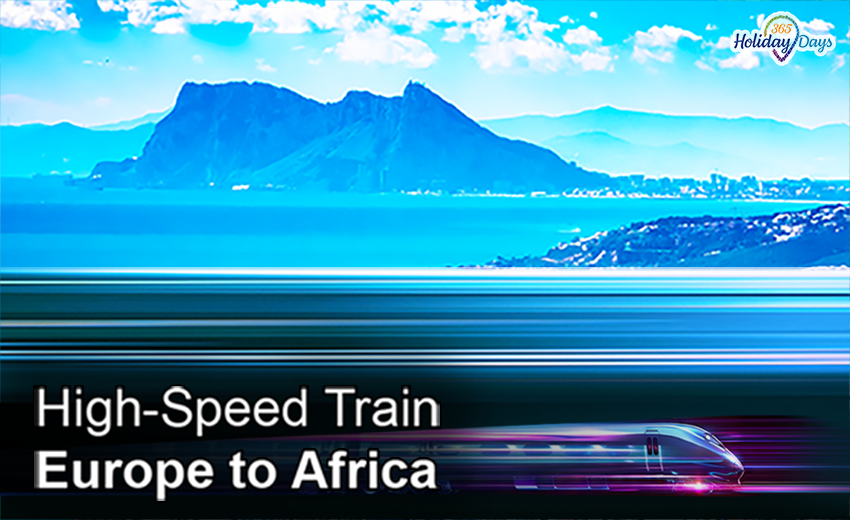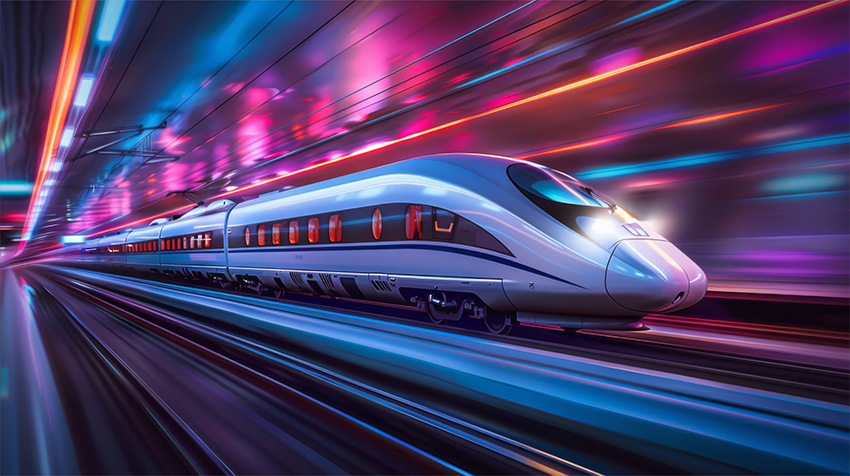
Green light for the long-anticipated underwater tunnel across the Strait of Gibraltar! It would set the very first physical link between Europe and Africa.
The ambitious project, dating back since the 19th century, should finally start off in 2025. And the new ‘AFRO-EURO TUNNEL’ would have to provide a high-speed rail connection between the two continents in time for FIFA World Cup 2030, hosted jointly by Morocco, Spain and Portugal.
The New Gibraltar Tunnel

The new channel tunnel is being planned as a high-speed train tunnel that should link directly to Spain and Morocco’s existing railway network. It would be partially underwater – 28.7km/ 17.8mi, totaling 38.7km/ 24mi in length. What’s more, is that it would reach a maximum depth of almost half a kilometer (475m/ 1558ft). That would make the Gibraltar Tunnel the deepest underwater tunnel in the world!
The design features three separate tubes – two bullet train tubes with a service tunnel in between.
The project would connect Punta Paloma in Tarifa, Anadalusia – the southernmost point of the Iberian Peninsula, with Cape Malabata, east of Tangier. It would also provide a direct link between the Spanish capital Madrid and the largest Moroccan city Casablanca!
BENEFITS of an Underwater Tunnel Between Spain and Morocco

The new Gibraltar tunnel would bring many ecological benefits, including reducing carbon emissions by swapping ship and plane travel, relying on fuel, with electric trains. It would also provide a way for solar energy to be transported from Sahara to Europe, for a greener future!
In addition, the speed of travelling between 2 continents would boost local tourism and facilitate trade. It’s been estimated that, yearly, the new undersea train route could transport 13 million cargo and almost 13 million people too!
The project should also reduce poverty in Africa, as it would boost its economy in various ways, and create many jobs.
Last but not least, the Gibraltar tunnel would benefit FIFA World Cup greatly! Which is what gave a new impetus to the project in the first place.
TIMELINE of the Gibraltar Tunnel
1869 – A French engineer introduced the first concept of an underwater tunnel through the Strait of Gibraltar.
1930s – The Gibraltar tunnel project was brought forward, but it was deemed impossible to build at the time.
1981 – The kings of Spain and Morocco established SECEGSA – Spanish Society for Fixed Communication Studies through the Strait of Gibraltar.
1986 – The first bridge proposal was put forward, but it was rejected due to all the risks it involved. Another bridge proposal followed, which was also declined.
2003 – Spain and Morocco agreed to explore the idea of a tunnel again, designed by SECEGSA.
2007 – A study concluded that the project was unfeasible…
2018 – A new study reversed the findings of the study from 2007!
Nov 2020 – The SECEGSA project was restored.
May 2024 – It was finally decided that the Gibraltar tunnel would become a reality!
TOP Underwater Tunnels in the World:
- Seikan Tunnel in Japan – the world’s largest submerged rail tunnel, stretching across 54km/ 33mi at a maximum depth of 240m/ 790ft.
- Channel Tunnel/ Euro Tunnel between England and France, celebrating its 30th anniversary! It boasts the longest undersea section of any other tunnel in the world – 38km/ 24mi. It was built similarly to the project for the new Gibraltar tunnel, with 2 train tubes and a service tunnel. However, it’s much shallower – from 75m/ 246ft to 115m/ 377ft below sea level.
- Ryfast Tunnel in Norway – currently the deepest subsea road tunnel on the planet, reaching maximum depth of 292m/ 958ft.
Lets hope for a new, greener, and faster link from Europe to Africa! And a much brighter future for the Dark Continent 💛

You may also want to check out:
10 Eco-friendly Traveling Tips
